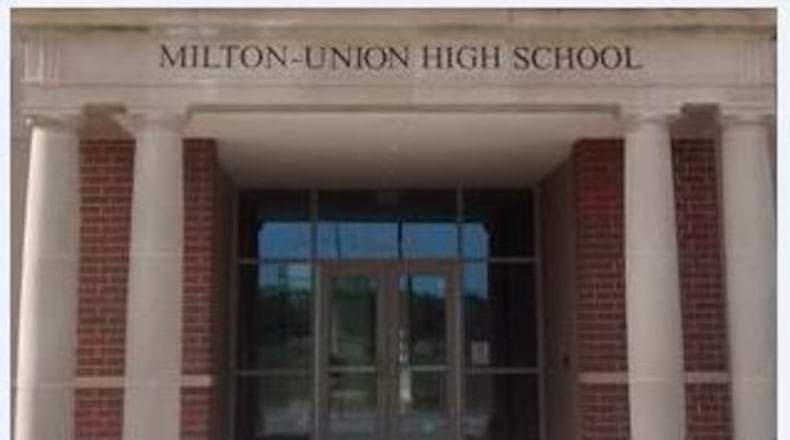A new organization, the Milton Union Alliance, was formed in January by community members who strongly support the school and community.
“MUA’s mission is to raise awareness of important issues that impact the quality of the Milton-Union Schools and to create a more informed community. We will share knowledge and raise funds to support parents and educators in empowering students to achieve their full potential,” said organization chair Kyle Hinkelman.
Without the proposed tax increase, MUA officials said the district would face making approximately $2 million in cuts by reducing staff positions and programming along with other measures. Those could include reducing transportation by cutting high school bus routes and increasing the radius for transportation for other students from one mile to two miles.
The Ohio Department of Education lists the district at 1,283 students last school year (2022-23), down from 1,373 in the 2018-19 school year. Superintendent Brad Ritchey said the district has a total of 1,504 students counting those who are “educated elsewhere,” including in county Educational Service Center units and at the Miami Valley Career Tech Center.
Ritchey said Milton-Union has about 160 classified and certified staff members.
The district in November failed in its attempt to secure voters’ approval of a 7.62-mill emergency levy that would have brought in $2 million per year for seven years. The Board of Education chose a different route of a new earned income tax to place before voters in March.
The district’s existing earned income tax is 1.25%, split two ways — 1.15%, or 92% of the tax, goes to permanent improvements (largely facility-related costs), while only 0.1%, or 8% of the tax, goes to day-to-day school costs (salaries, benefits, school supplies). The 92/8 split is required to remain.
If the proposed new earned income tax passes, the Board of Education has agreed to reduce the existing earned income tax (with the 92/8 split), by 0.5%, taking that tax from 1.25% down to 0.75%.
The new proposed earned income tax of 1.0% on the March ballot (with 100% going to day-to-day operations) would be added to the reduced 0.75% earned income tax, making the total tax 1.75% — an effective increase of 0.5% from the existing rate.
For a person with $50,000 in taxable income, that 0.5% income tax increase would cost an additional $250 per year.
The new funding plan would cover the deficit in operating costs and allow the district to handle increasing costs of day-to-day operations; eliminate deficit spending; avoid cuts in staffing and courses for students; provide students with up-to-date curriculum materials, technology and other resources; and maintain and care for buildings, facilities, grounds and transportation fleet.
The MUA group that supports the levy posted their answers to levy-related questions at www.miltonunionalliance.org.
MUA pointed to inflation and labor shortages as reasons for the district’s increased costs. They also emphasized that only those earning income in the school district would pay the tax. Those who are on a pension, social security, child support, welfare benefits or disability will not pay the tax.
Financial details
Milton-Union schools have spent more than they took in the past two years, gradually reducing their carryover cash balance, according to the five-year financial forecast the district submitted to the state.
The school district started this year with about $5.8 million in the bank, or 35% of a year’s spending, which is about average for an Ohio school district, according to recent DDN research.
District revenue has been increasing — from $14.4 million in 2021-22, to $15.03 million in 2022-23, and is projected up again this year at $16.06 million, according to that forecast.
But after being $722,000 in the red for 2021-22, district spending increased dramatically (12%) in 2022-23, as the district spent $1.9 million more than they took in, according to that five-year forecast. The district has projected that spending will continue to increase, and growing deficits of at least $1 million were forecast this year and for future years.
Contact this contributing writer at nancykburr@aol.com
About the Author
